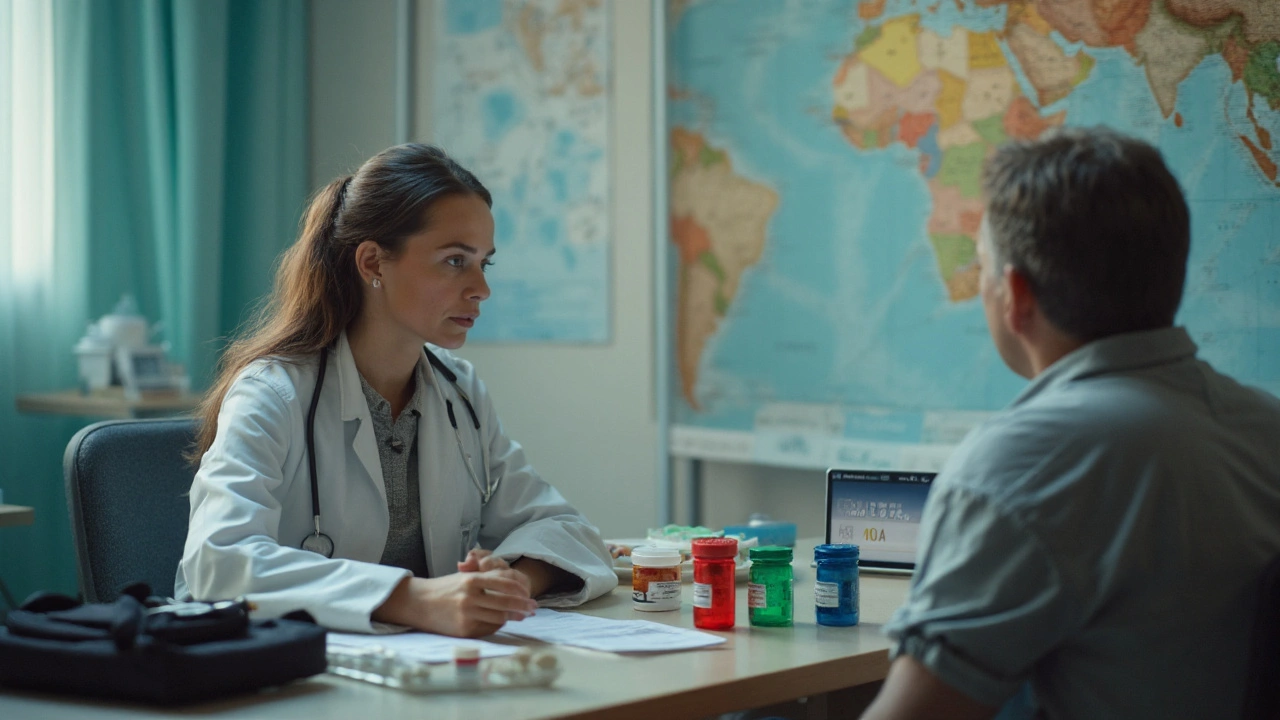Typhoid Vaccine: What It Is, Who Should Get It, and How It Helps
Typhoid fever is caused by Salmonella Typhi bacteria and spreads through contaminated food or water. The good news? A simple injection can stop it before it even starts. This guide breaks down the basics of the typhoid vaccine so you can decide if it’s right for you.
How the Vaccine Works and the Types Available
There are two main typhoid vaccines used in the U.S. and many other countries. The first is an injectable polysaccharide vaccine (Typhim Vi) given as a single dose. It triggers your immune system to produce antibodies that recognize the bacteria’s outer coating. The second is a live‑attenuated oral capsule (Vivotif) taken in four doses over a week. The oral version mimics a natural infection, so it can give longer protection, especially for travelers who might be exposed for months.
Both vaccines are safe for adults and kids over two years old. If you have a weakened immune system, talk to your doctor before choosing the oral form because it contains live bacteria.
Who Needs the Vaccine and When to Get It
If you’re heading to parts of South Asia, Africa, the Caribbean, or Central America where typhoid is still common, a vaccine is a smart move. Even short trips can expose you to contaminated street food or water. People who work in labs handling the bacteria, or those living in areas with poor sanitation, should also be vaccinated.
Timing matters. The injectable vaccine protects you for about two years, so get it at least two weeks before you travel. The oral capsule takes about a week to finish the series and becomes fully effective one week after the last dose, giving you roughly five years of protection.
Pregnant women can receive the injectable vaccine if the risk of exposure is high, but the oral version is usually avoided during pregnancy.
Side effects are mild. Expect a sore arm or low‑grade fever for a day or two after the injection. The oral capsules may cause mild stomach upset. Serious reactions are rare, but seek medical help if you develop a high fever, rash, or difficulty breathing.
After vaccination, continue good food safety habits: drink bottled or boiled water, avoid raw veggies that can’t be peeled, and wash hands frequently. The vaccine isn’t a free pass to eat anything.
Bottom line: the typhoid vaccine is an easy, low‑risk way to protect yourself when you’re in high‑risk areas. Talk to your pharmacist or doctor, pick the right type for your situation, and get it done well before you leave. Safe travels!

Erythromycin for Typhoid Fever: When to Use It, Dosing, and Prevention (2025 Guide)
Does erythromycin still treat typhoid? Learn when to use it, dosing, side effects, and safer alternatives-plus vaccines and prevention tips updated for 2025.
- Health and Wellness (59)
- Drug Information (52)
- Pharmacy Information (19)
- Medical Conditions (18)
- Supplements (4)
- Diabetes (3)
- Travel Health (2)
- Parenting (2)
- Mental Health (2)
- Heart Health (1)
-
How and Where to Buy Oseltamivir Online Safely (2025 Guide)
22 Aug 2025 -
Nimotop vs. Alternative Calcium Channel Blockers: A Practical Comparison
28 Sep 2025 -
Buy Generic Tamoxifen Online in Australia: Safe, Legal, and Low-Cost Options (2025)
9 Sep 2025 -
Celecoxib for tendonitis: Is it effective?
27 Apr 2023 -
Blood Sugar Control and Diabetic Peripheral Neuropathy: Key Management Strategies
2 Oct 2025

3.09.25
Alistair Mukondiwa
11